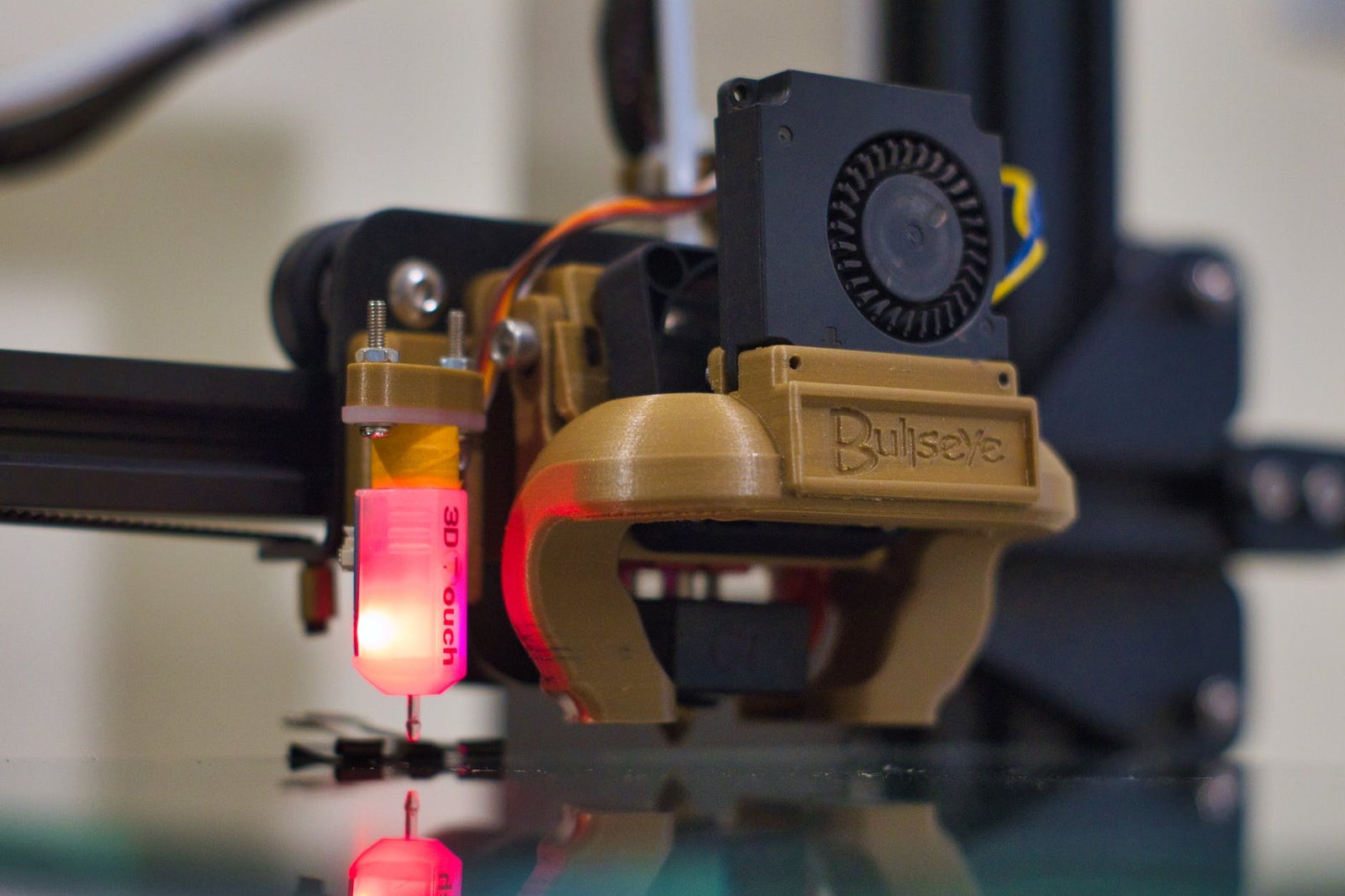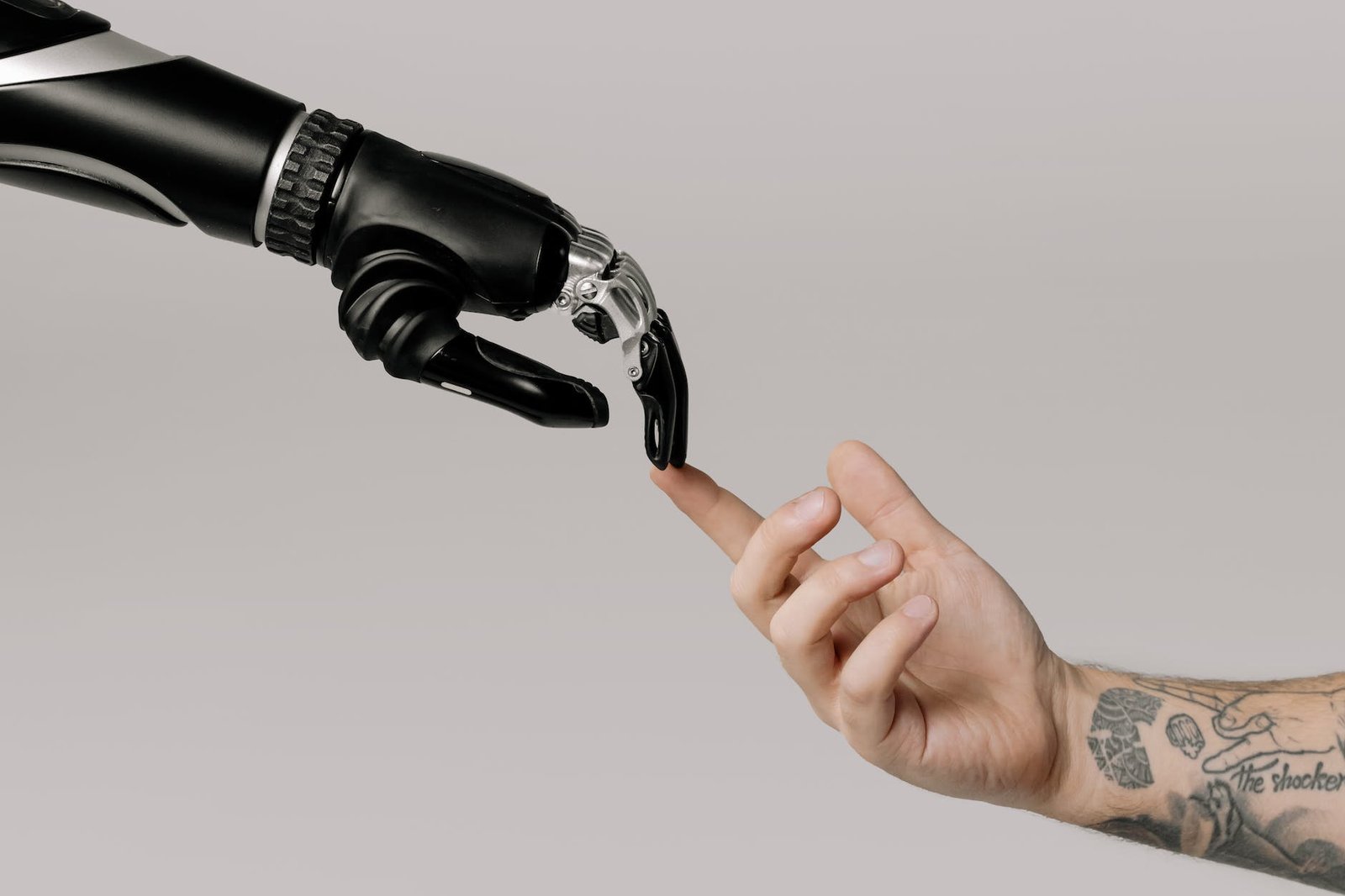The print industry landscape is continuously evolving with new innovations and advancements reshaping production, applications, and business models. As we move into 2024, several key trends will define the next era of printing technologies across sectors.
In this small guide, we will explore the critical trends, developments, and strategies that will determine the future of the print industry.
Understanding The Relevance of Printing Trends in 2024
In the ever-changing landscape of technology, particularly the print market, understanding the advancements in printing technologies like inkjet technology that will shape the year 2024 and beyond is crucial. Printing, particularly with the usage of modern printing machines, has come a long way from its traditional roots, with continuous evolution and innovation, especially post-pandemic, revolutionizing the print industry.
The relevance of understanding printing technologies in 2024 cannot be overstated. The process goes beyond merely applying ink on paper; it includes a myriad of techniques, materials, and 3D printing processes that enhance efficiency and impact various sectors and daily existence. From commercial printing to personal use, being aware of these developments can empower individuals and businesses alike.
Technological advancements, such as additive manufacturing, have significantly influenced the print industry’s capabilities and efficiency. The advent of digital printing techniques has altered how we produce printed materials with 3d printing technologies beginning to take center stage. With improved quality, speed, and cost-effectiveness compared to traditional methods like offset printing, digital platforms, especially eco-friendly printing, are becoming increasingly popular trends in 2024.
Additionally, digital transformation has unlocked fresh opportunities for customization and personalization in print solutions. The compound annual growth rate (CAGR) has also been influenced largely by these changes. Variable data printing and additive manufacturing, trending in 2024 according to Smithers, allow for targeted marketing campaigns designed precisely for individual preferences or specific demographic groups. This level of personalization enhances engagement and drives better outcomes for businesses.

Understanding these evolving technological trends helps individuals make informed decisions regarding their printing needs in 2024. Whether choosing between different types of printers or optimizing resources such as paper or ink usage, being knowledgeable about current innovations ensures efficient operations while minimizing environmental impact.
Staying updated on emerging printing technologies is essential for everyone involved in creating or consuming printed materials in 2024. By harnessing these advancements effectively, we can enhance user experiences through customized content creation while embracing sustainable practices within the evolving print industry landscape.
The Shift Towards User-Centric Print Solutions
In recent years, the print industry has witnessed a significant shift towards user-centric print solutions driven by advancements in technology and changing work environments prioritizing flexibility and convenience.
A notable trend is the transition from dedicated desktop workstations to more flexible printing options such as hot-desks and remote work setups. In keeping with top printing trends, these new printing options, specifically additive manufacturing, allow for greater accessibility and accommodate different working styles.
When considering user preferences and frequency of printing in 2024, personalized experiences play a crucial role in enhancing overall satisfaction. By understanding the specific needs of users, print solutions can be prototyped and tailored accordingly, resulting in an improved user experience.
Efficient resource deployment, a trend that will shape the global commercial printing market, is another aspect facilitated by technological advancements in printing technologies. Through optimized ink, paper, and energy usage, technology enables businesses, particularly 3d print companies, to minimize waste while maintaining productivity levels. This not only reduces costs but also contributes to sustainable practices and trends that will shape the eco-friendly printing industry.

Speaking of sustainability, responsible sourcing and recycling initiatives have gained prominence as part of the shift towards user-centric print solutions, with traditional manufacturing methods falling behind. Companies are now giving priority to environmental considerations, shifting towards greener printing, while selecting substrates for print production. Additionally, greener printing practices through recycling programs ensure that waste generated during the printing process is minimized or repurposed whenever possible.
Overall, the ongoing shift towards user-centric, secure printing solutions highlights the importance of accommodating individual preferences and providing flexible printing options. By embracing these changes driven by evolving technology and sustainable practices, businesses can enhance their offerings while prioritizing customer satisfaction.
Integration of Artificial Intelligence in the Print Industry
The integration of Artificial Intelligence (AI) into printing machines is revolutionizing the print industry by bringing forth a new wave of efficiency and innovation. In this section, we will explore how AI-powered technologies are transforming customer support and content creation within the print industry in the aftermath of the pandemic.
AI-Powered Managed Services
One notable area where AI is making significant strides is in the managed services sector through machine learning models that enable advanced customer support capabilities enhancing overall satisfaction. By analyzing patterns and historical data, AI algorithms provide pre-emptive fault detection in print jobs, leading to improved maintenance efficiency.
With these advancements, businesses can proactively address potential issues before they escalate into larger problems saving time while ensuring optimal printer performance for uninterrupted workflow.
Customized Content Creation Enabled by AI
Another exciting development facilitated by AI is the seamless integration between content creation platforms and print experiences for personalized materials at home or office environments. Leveraging machine learning algorithms, AI enhances content creation processes for print jobs by enabling dynamic customization based on individual preferences or specific demographics, a trend that will shape textile printing.
By harnessing data analytics combined with AI technology, printing companies can offer enhanced personalization and improve the efficiency of their products and services through additive manufacturing and variable data printing techniques. This allows for highly-targeted marketing campaigns and personalized communication materials that resonate with customers on a deeper level, a significant trend in the global commercial printing market in 2024.

The integration of Artificial Intelligence in the print industry brings numerous benefits such as improved customer support through fault detection capabilities and customized content creation using data-driven insights. Improvements in 3d printing technologies and the implementation of secure printing practices lay the foundation for enhanced efficiency and heightened personalization within the print industry landscape.
Digital Transformation in Printing Technologies
Digital transformation has significantly impacted the printing industry, revolutionizing how print materials are produced and consumed. With the advent of eco-friendly inkjet technology in digital printing, personalized and on-demand solutions have become increasingly popular.
One key advantage of digital printing is its ability to cater to precise quantity requirements reducing waste production compared to traditional offset methods. On-demand capabilities allow businesses to produce printed materials in smaller batches based on real-time demand eliminating excessive inventory storage needs.
Furthermore, data analytics combined with artificial intelligence (AI) enables enhanced personalization through variable data printing techniques. By leveraging customer insights and preferences, businesses concentrated on the printing market can create more targeted and relevant content for their intended audience, driving better engagement and higher conversion rates.
Digital transformation, including additive manufacturing and top printing trends, facilitates data-driven decision-making processes within the print industry. Advanced analytics tools provide valuable insights into consumer behavior patterns, market trends, and campaign effectiveness. Armed with this information, companies can develop targeted marketing approaches tailoring their content creation based on specific demographics or individual preferences.

To maintain a competitive edge in this rapidly advancing landscape, businesses must invest in new technologies compatible with the emerging trends, as predicted by market trends analyst, Smithers. Retraining employees ensures they possess necessary skills to leverage these technological advancements effectively.
Innovative applications of printing technologies extend across various sectors like healthcare where 3D-printing has transformed medical device manufacturing or education where interactive printed materials enhance students’ learning experiences.
The adoption of agile business models, which can rapidly respond to market demands, is another vital strategy for staying competitive, considering that technology is also steadily evolving. By continuously monitoring industry trends and customer expectations, companies can quickly adjust their strategies and offerings to meet evolving needs.
Adapting Business Models and Investments in New Technology
To thrive in the ever-evolving print industry requires adapting business models and making strategic investments in new technologies. This section examines the importance of staying ahead of emerging trends and explores strategies for remaining competitive.
Embracing Emerging Trends Through Technology Investment
Investing in new technologies is crucial to keep up with changing times within the print industry in 2024. Embracing innovative eco-friendly printing technologies, top trends in 2024, allows businesses to meet evolving customer demands effectively.
Re-skilling staff, a trend projected for 2024, guarantees they have the essential abilities to operate modern eco-friendly printing equipment proficiently, consequently enhancing efficiency.
Exploring innovative applications of 3d print across various industries such as healthcare or education inspires businesses to explore diverse opportunities beyond traditional print services.
By investing strategically in technology, businesses can tap into new markets while meeting customer demands more effectively.
Strategies for Staying Competitive
Remaining competitive requires adopting agile business models that allow quick responses to market demands. Building strategic partnerships fosters innovation while embracing flexibility allows efficient adaptation to change. Continuous improvement through research and development efforts helps identify emerging trends and adapt accordingly.
The effective administration of printing operations, considering the foremost trends in 2024, ensures workers have the requisite capabilities to successfully maneuver the challenges the printing industry faces.
In conclusion, adapting business models and investing in new technologies are crucial steps towards success in the print industry. Embracing emerging trends through technology investments allows companies to stay relevant and satisfy evolving customer demands. By adopting agile business models, fostering collaborations, and continuously improving printing operations, organizations can position themselves as leaders in an ever-evolving and emerging digital landscape.
Key Trends Identified by Industry Experts
Industry experts have identified several key trends shaping the future of printing technologies in 2024. These trends reflect evolving needs and demands of businesses and individuals as well as advancements in technology.
Flexibility in Device Usage
In the realm of top printing trends, one prominent trend is the increasing emphasis on flexibility in device usage and enhanced printing speeds within organizations. High-quality output devices fulfill multiple departmental needs maximizing efficiency and cost-effectiveness.
Shared device usage among employees enhances flexibility while integration possibilities streamline workflow processes. Integration between printers and other systems further enhances productivity such as print-like scanning functionality or backend system integration for automated tasks.
Smart Refresh Approach
One significant trend in the printing market for 2024 is the incorporation of a smart refresh strategy concerning device and 3D printer lifecycle administration, which ultimately contributes to enhancing efficiency. Instead of time-based replacements, this approach utilizes agreed-upon criteria for updates resulting in cost savings and reduced environmental impact.
Assessing factors like performance metrics, maintenance requirements, technological advancements enables informed decisions about upgrading printing devices when necessary.
In conclusion, flexibility in device usage along with a smart refresh approach are key trends shaping printing technologies in 2024. Embracing these trends optimizes printing processes enhancing collaboration among employees while ensuring efficient resource allocation.
3D Printing Revolution Enters the Mainstream
3D printing technology has long been confined to prototyping roles and niche applications. However, in 2024 and beyond, the 3D printing revolution will enter a monumental new phase, moving firmly into the mainstream. As the technology becomes more affordable, accessible and advanced, it will integrate across industries in transformative ways.

The ability to economically “print” intricate designs on-demand using sustainable materials will unleash waves of innovation. 3D printing will disrupt traditional manufacturing while enabling mass customization. Various sectors will embrace this technology to address evolving consumer demands and engineer novel products.
Applications Across Diverse Sectors
In 2024, we expect 3D printing adoption to accelerate far beyond prototyping into final production applications across sectors like:
Healthcare – Custom prosthetics, implants, personalized medicineAutomotive – Lightweight auto parts, rapid prototyping Aerospace – Complex geometries, lightweight components Consumer Goods – Personalized fashion/footwear, custom gadgets Food – Unique shapes, nutritional modulation
With accessible 3D printing, businesses can easily manufacture short runs of highly customized products aligned to niche consumer interests. This will revolutionize manufacturing dynamics.
Growth of Sustainable 3D Printing
As environmental awareness grows, sustainable 3D printing methods will take center stage in 2024 and beyond. Consumers and governments alike will demand businesses minimize ecological impact across the product lifecycle.
Trends in eco-friendly 3D printing include:
- Bioprinting – Using plant-derived, compostable bio-inks
- Recycled materials – Plastics, metals, polymers from waste streams
- Energy-efficient processes – Lower power consumption
- Reduced waste – On-demand printing eliminates overproduction
By embracing sustainable practices, the 3D printing sector can drive the manufacturing industry into a greener future.
Integration with Augmented Reality
3D printing innovation will fuse with augmented reality (AR) to bridge physical and digital. Using AR devices, users can scan a 3D printed product to unlock interactive content, animations, immersive experiences and digital customization options.
AR-enabled 3D printing opens new possibilities across:
- Marketing – Bringing product visuals to life
- Education – Interactive learning
- Manuals – Embedded assembly/repair instructions
- Healthcare – Digital anatomy overlays
This technology convergence will profoundly expand 3D printing’s capabilities and applications.
In summary, 3D printing is poised for a new era of mainstream integration in 2024 and beyond. As sectoral applications explode, sustainable trends proliferate and digital augmentations emerge, 3D printing will transform manufacturing and fuel immense innovation.
Final Thoughts on the Future of Printing
As we have explored, the print industry is undergoing exponential change led by digital disruption, demand for personalization and emerging technologies like AI. These trends are reshaping everything from printing techniques to business models and environmental impact.
Key highlights moving into 2024 include:
- Shift towards user-centric, on-demand printing
- Integration of AI to enhance efficiency
- Growth of sustainable printing practices
- Mainstream expansion of 3D printing across sectors
- Increasing adoption of cloud platforms
To capitalize on these developments, businesses must stay agile, foster innovation, invest in technology and focus on delivering exceptional customer experiences.
The future promises unprecedented opportunities to transform how we create and consume print materials. By leveraging the power of data and new technologies strategically, print businesses can unlock value, reduce environmental impact and help shape the industry’s next era.


Leave a Reply